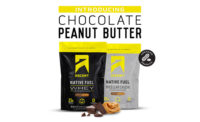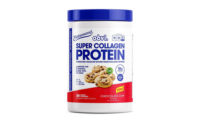Chocolate: Food or Drug?

The answer is that chocolate is already hot. It's probably the number one most craved food in North America! Unfortunately, guilt sets in after indulging, so here are a few healthful reasons for keeping the chocolate addiction going.
Heart and Mind
Carl Keen, Ph. D., from UC-Davis has found that chocolate contains some of the same antioxidant compounds of red wine, the polyphenols (flavonoids). Although the French commonly consume rich and fatty foods, their incidence of cardiovascular disease is very low. This has become known as the "French paradox." One theory is that that French remain healthy due, in part, to the consumption of red wine that contains these cardio-protective antioxidant compounds. (See page NS9, this issue of NutraSolutions.)The "chocolate paradox" thus refers to new research that shows that chocolate confectionery, which contains large amounts of fat and sugar, also contains cardio-protective polyphenols that may even provide a stronger effect than those in red wine. In a study of healthy adults, Keen found that platelet activation was inhibited two and six hours after consuming a chocolate beverage, suggesting that a long-term moderate intake of chocolate may reduce the risk of heart disease.
Haven't we all also intuitively understood the benefits to mind and mood when chocolate is consumed? We crave it, we enjoy the sensations of eating it, and it affects our mood. Chocolate craving has also been tied to PMS in women. So, is this all in our heads, or are there biological factors as well? The theories are many, but chocolate's complex chemistry does contain several substances that are potentially mood altering.
• The Biogenic Amines: Chocolate contains biogenic amines that act as sympathomimetic agents. The most important of the biogenic amines in chocolate are phenylethylamine (PEA) and tyramine.
PEA is functionally and structurally similar to amphetamines and catecholamines, and works as a neuromodulator. Low levels of PEA have been linked to depression, and its effect has been likened to the feeling of being in love. Chocolate contains relatively large amounts of this substance (0.4-6.6 mcg/gm), so some theorize it to be the "ecstasy" in chocolate.
• Cannabinoid-like Fatty Acids: Substances have been found in chocolate, such as the N-acylethanolamines, that bind to the cannabinoid receptors of the brain. Activation of these receptors is known to cause the euphoria and heightened sensitivity experienced by psychoactive substances. However, it is not known whether there is enough of these bioactive substances in chocolate to produce a mood-altering effect.
• The Methylxanthines: Chocolate also contains the methylxanthines caffeine and theobromine, which may act as stimulants after consumption of chocolate. The average chocolate bar (1.65 oz) contains approximately 10 mg of caffeine and 92 mg of theobromine. Considering the typical cup of coffee contains about 80 to 100 mg of caffeine, these amounts do not seem excessive. Additionally, even though caffeine is a well-known sympathomimetic, the behavioral effects of theobromine are not as well studied.
• Magnesium: In initial research, the supplementation of magnesium has resulted in the satiation of chocolate cravings. Since both chocolate and cocoa powder contain high levels of magnesium (520 mg/100 g and 100 mg/100 g, respectively), our craving of chocolate may just reflect our desire to supplement our diets with this essential element. Additionally, there are links between low magnesium levels and the development of PMS symptoms, which may explain some women's monthly chocolate binge.
• Fat and Sugar: Both sugar and cocoa butterfat contribute to the high hedonic ratings of chocolate. Although many believe these are the main reasons for craving, studies have indicated that they are only partially to blame for our love of chocolate, and that other constituents in chocolate are important (otherwise we would equally desire white chocolate).
• Aroma: In one study that examined the pharmacological versus sensory factors in chocolate craving, the role of aroma was indicated as one of the most important factors in abating our yearning for chocolate, independent of sweetness, texture, and calories. Maybe some chocolate aromatherapy could do us all good!
With so much interesting research and complex chemistry, it is no wonder that Montezuma was said to consume over 50 cups of chocolate beverages daily, and chocolate houses in Europe at one time competed in popularity with coffee houses and pubs. Perhaps one researcher2 who jokingly theorized in the journal Nutrition about the positive effect of chocolate on longevity (because the happiness it causes would boost our immune systems) was not far off when he mused, individuals should add M & M's to their vitamin pill piles.
Once a botanical is determined to be a food additive in a conventional food product, two key issues must be considered: safety and the types of claims that can be made.
Although legally a botanical ingredient in a food is considered a food additive, many companies have walked the middle line between supplements and foods and have note created FRAS self-affirmation files for their herbal ingredients. Both the GAO and CSPI (Center for the Science in the Public Interest) have criticized the FDA for not taking enforcement action against foods that they see as containing non-GRAS items.
A second issue is the label claims. According to DSHEA, Section 3, structure/function claims are allowed on dietary supplement labels but not food labels. The GAO believes that the public confuses these claims as health claims, which are very specifically and rigorously regulated by the FDA.
Looking for a reprint of this article?
From high-res PDFs to custom plaques, order your copy today!





